Having spent my entire life immersed in a profound passion for Rottweilers and boasting over a decade of dedicated expertise in the art of canine instruction,
I am exuberantly poised to present to you this comprehensive compendium on the nuances of molding your beloved Rottweiler into an exemplar of canine excellence.
The regal and brawny Rottweiler, a breed that has captured my heart since the tender days of my youth, owes its allure to an amalgamation of sagacity, malleability, and an unwavering commitment to their cherished human companions.
Rottweilers have a long history as versatile working dogs dating back to the Roman Empire when they drove cattle and guarded camps.
Their strong herding instincts, courageous nature, and obedience made them ideal police, military and service dogs in the 20th century.
In the contemporary landscape, the Rottweiler stands tall as a breed of global acclaim, maintaining an enduring popularity that reverberates across borders.
A standout attribute inherent to the Rottweiler is their remarkable prowess in the realm of education, a facet of their character that sets them apart in the world of canine companionship.
In professor Stanley Coren’s book The Intelligence of Dogs, the Rottweiler ranks #9 out of 138 breeds analyzed for working/obedience intelligence.
Their eagerness to work, strong focus, and responsiveness to praise allow Rottweilers to excel at all types of training from basic obedience to high-level competition.
However, proper training and socialization is absolutely essential for this powerful breed. Without it, their natural guarding tendencies can become problematic.
With structured guidance, the Rottweiler develops into an incredible companion. This is where my comprehensive guide comes in!
Throughout this guide, you’ll learn:
- Proper socialization starting with Rottweiler puppies
- Step-by-step obedience training from sit and stay to advanced skills
- Troubleshooting unwanted behaviors like jumping, nipping, or pulling
- Protection and guard training done ethically and safely
- Mental stimulation and exercise needs for a happy Rottweiler
And much more! The overarching objective that I ardently pursue is the exhaustive exploration of Rottweiler training, encompassing an extensive array of commands and techniques, all meticulously crafted to forge a canine paragon of both decorum and ardor.
Whether your journey as a Rottweiler guardian is at its inception or you bear the mantle of seasoned expertise, my enthusiasm knows no bounds in offering you my time-tested methodologies to instill in your Rottweiler the lofty distinction of being the quintessential exemplar of canine virtue, be they a stalwart lad or a winsome maiden!
Is a Rottweiler the Right Dog For You?
The critical preliminary measure, prior to the acquisition of either a fledgling puppy or the embrace of a mature canine companion, revolves around the discernment of whether the Rottweiler breed aligns harmoniously with the dynamics of your familial unit.
As a loyal guardian breed, Rottweilers have some unique considerations compared to other dogs. In this section, we’ll explore the Rottweiler temperament, their suitability as family pets, and address some common myths.
What’s the Rottweiler Temperament?
- Confident, courageous, and alert
- Devoted bond with owners
- Natural protectiveness and territoriality
- Intelligent and highly trainable
- Calm and dignified when properly exercised/stimulated
Rottweilers form extremely strong bonds with their people and have strong guarding instincts. With proper Rottweiler training commands and socialization from puppyhood, they develop trust and control.
Early Rottweiler training commands help channel their natural behaviors into acceptable outlets, preventing negative manifestations of territoriality or suspicion towards strangers. Proper handling and training is mandatory for this breed.
Are Rottweilers Good Family Dogs?
When raised responsibly and given clear structure, leadership, training, exercise and affection, Rottweilers can be stable, loving family companions. However, they may not be ideal for families with very small children due to their large size and protective instincts.
Some great traits that make well-trained Rottweilers excellent family dogs include:
- Affectionate, silly and eager to please loved ones
- Gentle and patient with children in their own family
- Playful and energetic
- Highly trainable through consistent positive Rottweiler training commands
- Comfortable with other pets if properly socialized
Rottweiler Aggression Myths vs Facts
There are many unfair stereotypes painting Rottweilers as inherently aggressive or dangerous. In truth, no breed is “born” aggressive without influence from genetics, environment, training and socialization.
Some key facts about Rottweilers and aggression:
- Rottweilers scored very low on dog aggression tests by the American Temperament Test Society
- Poorly bred, untrained dogs of any breed can develop aggression issues
- Aggression usually results from lack of training, socialization, exercise and affection
- Well-bred, properly trained Rottweilers are no more aggressive than any other breed
The most important factors are responsible ownership, early socialization and consistent positive Rottweiler training commands. With this approach, the loyal Rottweiler becomes a delightful companion animal.
Puppy Training for Rottweilers
The early puppy months are the perfect opportunity to start shaping your Rottweiler‘s behavior and temperament. By beginning training and socialization early, you set up your pup for success as an adult dog. In this section, we’ll cover the key areas of Rottweiler puppy training.
When to Start Training a Rottweiler Puppy
You can start training a Rottweiler as soon as you bring them home at 8 weeks old! Puppies have a prime socialization period before 12 weeks of age where they are most receptive to habituating to new people, animals, environments and experiences.
Begin basic Rottweiler training commands like name recognition, focus, and sit right away. Keep initial sessions very short, positive and rewarding. Puppies have very short attention spans but learn quickly with consistency.
Socialization Tips for Rottweiler Puppies
Proper socialization prevents fearfulness, territoriality or aggression issues later in life. Expose your Rottweiler puppy to a wide variety of people, places and other friendly, vaccinated dogs during the first 4 months.
Helpful socialization tips:
- Visit new environments like parks, stores (pet-friendly), cars, elevators
- Meet people of all ages, appearances, wearing hats/uniforms
- Positive introductions with dogs, cats and other pets
- Reward calm, polite behavior around new things
- Keep sessions brief and upbeat
Teaching Bite Inhibition
Rottweiler puppies explore the world with their mouths, so it’s important to teach good bite inhibition from day one. When they mouth too hard, give a high-pitched “yelp” to indicate pain. Then redirect to a toy and praise for gentle play. This communicates acceptable pressure.
You can also try gently holding their mouth closed for 2-3 seconds or walking away/ignoring them briefly. The key is teaching them to control their bite force and that mouthing humans is unacceptable. Be patient – this takes consistency over time.
Housetraining Your Rottweiler Puppy
- Take them out frequently (every 30 mins – 1 hour when active)
- Praise and rewardpottying outside
- Limit access inside when unsupervised
- Feed on a consistent schedule
- Avoid punishing accidents after the fact
- Learn their signals for needing to potty
- Be patient! It can take 4-6 months for full bladder control
Crate training can also help establish a potty routine and prevent indoor accidents.
First Obedience Commands to Teach Your Puppy
Start with the basics like:
- Name recognition
- Focus/making eye contact
- Sit
- Down
- Come when called
- Loose leash walking
Keep sessions very short (2-5 mins) but frequently throughout the day. Use high-value treats and keep it fun! Avoid repetition to the point of boredom. Mastering these basic Rottweiler training commands builds a foundation for more advanced obedience.
Should You Do Obedience Classes?
Enrolling in positive reinforcement puppy obedience classes around 12-16 weeks old is highly recommended. This allows essential off-leash socialization with new dogs/people in a controlled setting. An experienced trainer can help refine your technique and identify any potential behavior issues early.
You can continue building on what you learn in class through daily short training sessions at home. This combination gives your Rottweiler puppy the best start for proper development.
Obedience Training for Rottweilers
Obedience training is essential for reinforcing important behaviors and addressing any undesirable habits in your Rottweiler. Structured, positive training establishes you as a fair leader and enhances your bond. In this section, we’ll go over:
- The core obedience commands
- Troubleshooting pulling and other issues
- Fun tricks to teach your Rottweiler
- Building engagement through training
The 5 Core Obedience Rottweiler Training Commands
These fundamental Rottweiler training commands provide the base for good manners and impulse control.
Sit
Teach this early! Reward your Rottweiler each time their rear hits the floor on command. Use a treat lure to guide their nose up and back until they sit. Phase out the lure over many repetitions.
Stay
Tell them to sit, say “stay”, take a few steps back, then return and reward. Gradually increase distance and duration. Change locations too. This builds patience.
Come
Call your Rottweiler in an excited tone and reward them profusely for coming to you. Increase distance over time. Teach that coming always results in something positive.
Down
Ask them to sit, then lure down by moving a treat close to the floor. When they lie down, mark and reward. Add the verbal cue “down” once mastered.
Heel
Walk holding a treat at your side. Reward your Rottweiler for walking in perfect position. Use turns and changes of pace. Gradually phase out treats except for great focus.
Practice these commands daily to reinforce prompt obedience. Keep sessions upbeat with variety and play.
Stop Your Rottweiler From Pulling on Leash
If your Rottweiler pulls on leash, try stopping movement when they forge ahead. Resume walking when the leash is loose again. Consistently reward slack leash walking. Use high-value treats at first.
You can also change direction frequently whenever they pull, keeping them close to your side. Avoid letting them reach the object they are straining towards. This teaches that pulling prevents forward progress.
Settling on Cue – Relaxation Training
An overexcited Rottweiler has trouble focusing. Capture calmness by rewarding them for lying quietly. Mark and treat moments of relaxation. Provide a verbal cue like “settle” and praise when they remain calm on request.
Fun Advanced Tricks to Train Your Rottweiler
Once your Rottweiler masters the basics, teach fun tricks! Some good options:
- Shake/High-Five
- Spin in a circle
- Crawl
- Play dead
- Close/open doors
- Tidy up toys into box or basket
Make training feel like a game. End each session on a high note when they successfully perform a behavior.
Building Engagement with Your Rottweiler
You want your Rottweiler focused on you, even with distractions. Reward eye contact frequently throughout the day using their name. Practice heel work during walks before allowing sniff/potty breaks. Ask for a known cue before meals or giving a toy.
High engagement translates to better real-world obedience. Integrate short lessons into daily life.
Correction of Unwanted Behaviors
Never punish a Rottweiler after the fact for undesirable actions like housetraining mistakes, chewing, jumping, or nipping. They won’t understand.
Instead, set them up for success by managing the environment, rewarding wanted behaviors, redirecting onto appropriate items/actions, and preventing rewarding the unwanted behavior. Persistence and preventing rehearsal is key. Use their love of praise to shape their conduct.
Positive approaches yield the best results with this sensitive breed. Harsh corrections can backfire. Focus on reinforcing the right things, not punishing mistakes. Proper preventative Rottweiler training commands practiced daily prevents issues.
Protection and Guard Dog Training for Rottweilers
Many Rottweiler owners are interested in developing their dogs’ natural protective and guarding instincts. However, specialized protection training requires experience and careful consideration.
Is Protection Training Right for Your Rottweiler?
Before starting any protection work, ensure your Rottweiler:
- Excels at basic obedience commands
- Is properly socialized/comfortable around strangers
- Displays appropriate aggression restraint
- Is mentally and physically mature (over 2 years old)
- Is evaluated by a qualified trainer
Without a solid foundation of obedience and impulse control, protection training can be unsafe or backfire by creating fear-based aggression.
Genetic soundness and temperament testing helps determine suitability. Not all Rottweilers have the nerves and temperament for protection work.
How to Train Attack and Guard Commands
Never attempt to train aggressive behaviors without professional guidance. Here is a high-level overview:
- Start by imprinting early associations between “threats” and rewards for barking/guarding.
- Introduce obedience control like “speak”, “enough” etc.
- Gradually shape more intense defensive reactions using “acting” with safe equipment.
- Always maintain strict obedience, reward restraint, and end sessions positively.
This conditioning tapping into natural instincts requires intricate timing and handling skills. Rottweiler training commands for protection should only be done under the guidance of an expert.
Protection Training Exercises
Common exercises in Rottweiler protection training include:
- Controlled meet and greets with “threatening” strangers.
- Rewarding vigilant territorial patrolling and barking.
- “Attack” work using equipment like bite sleeves.
- Defense of handler from “assailant”.
- Cessation of guarding behavior on command.
All scenarios must encourage control and discipline, never allowing uncontrolled aggression.
Developing Guard Dog Traits
Rottweilers have natural protective instincts that can be magnified with proper training. To maximize your Rottweiler’s guard potential:
- Socialize extensively to promote appropriate wariness of true threats vs non-threats.
- Use obedience to manage territorial patrolling and alarm barking.
- Employ deterrent commands like “get back” or “stay” when confronting intruders.
- Praise boldness and barking in response to threatening stimuli.
- Discourage fearful reactivity towards non-threatening stimuli.
The key is cultivating controlled, discerning guarding behavior through skilled training, not just intensifying emotion-based aggression. Consult an expert for guidance.
The Rottweiler’s protective nature must be managed properly. With dedication and professional oversight, you can develop an impressive guardian dog using positive Rottweiler training commands.
Troubleshooting Common Rottweiler Behavioral Issues
Even attentive Rottweiler owners can encounter undesirable behaviors or obedience problems. Don’t despair – most issues can be resolved with time, patience and the right approach. Here are tips for addressing some common Rottweiler behavior and training challenges:
Aggression Towards Other Dogs
- Slow, positive exposure to stable dogs starting at a distance. Closely manage all interactions.
- Obedience training and impulse control around distractions.
- Reward calm, relaxed behavior on leash near other dogs.
- Eliminate tension on the leash in public and avoid consoling fear reactions. Remain relaxed yourself.
- Build confidence through structured activities with dogs they know.
Aggression Towards People
- Socialize extensively to new people starting young. Prioritize unusual appearances.
- Require a polite sit to greet. Reward calm interactions.
- Avoid punishing growls – this can worsen aggression over time. Redirect behaviors instead.
- Obedience training to instill confidence in handling and build trust.
- Evaluate for pain, fear, resource guarding or protection motivations. Address the underlying cause.
Excessive Barking
- Provide sufficient daily exercise, enrichment and training. A bored Rottweiler barks more.
- Reward quiet moments (capture calmness) and provide settling/relaxation cues.
- Manage environment to reduce triggers like fence-running or territorial barking at windows.
- Use commands like “enough” and “quiet” to interrupt barking followed by praise for obeying.
- Consider citronella spray collar as last resort for ingrained habit. Avoid shock collars.
Destructive Chewing
- Provide appropriate chew toys and rotate frequently to maintain novelty/interest.
- Crate train or confine when unsupervised to prevent access.
- Exercise before alone time and provide stimulating food puzzles.
- Discourage chewing inappropriate items with distraction, taste deterrents or interruptions.
- Praise and redirect to proper chew toys. Teach “leave it” command.
Separation Anxiety
- Establish consistent rituals before departures and keep arrivals/exits low key.
- Provide stimulating toys/chews when leaving.
- Start with very short departures and gradually increase duration.
- Audio/video recordings and dog appeasing pheromone diffusers can help.
- Severe cases may warrant desensitization under a trainer’s guidance and medication.
Pulling on Leash
- Stop or change direction whenever leash tightens. Reward slack leash walking.
- Practice heel using high-value treats as motivation. Fade food rewards over time.
- Use no-pull harness and double ended leash to discourage straining.
- Work on impulse control and attention frequently. Carry treats on walks.
- Sniff/potty breaks are rewards for periods of good leash manners.
General Disobedience
- Evaluate your timing, consistency and quality of rewards/corrections.
- Increase motivation through play, better treats or introducing novelty.
- Rule out pain, anxiety or other issues impeding focus. Adjust accordingly.
- Backtrack and strengthen foundational Rottweiler training commands like sit, stay, down.
- Shorten sessions, shift locations, and mix up behaviors to prevent boredom.
- Remain calm, upbeat and patient during training. Your energy impacts your Rottweiler’s willingness and ability to focus.
Identifying the motivation behind unwanted behaviors allows proper solutions. An expert trainer can help devise a customized behavior modification plan for persistent issues. Consistency and positive techniques are key for lasting improvement.
Key Training Tips for Rottweilers
When training your Rottweiler, there are some important techniques and best practices to employ for success:
Effective Treat Rewards
High-value, smelly treats are hugely motivational for teaching new Rottweiler training commands. Tiny soft treats allow frequent rewarding without overfeeding. Vary treats to maintain novelty and interest. Phase them out slowly over time for learned behaviors.
Use a Marker Word
Say “Yes!” or clicker the instant your Rottweiler performs the desired action before treating. This quickly reinforces the precise behavior you want to teach. Keep marker timing consistent.
Remain Patient and Consistent
Rottweilers thrive on consistency. Stick with training cues and techniques. If you switch approaches frequently, your Rottweiler may become frustrated or confused. Remain patient with the learning process and don’t move too quickly between steps when training a behavior.
Make Every Session Fun!
Keep a playful, upbeat attitude during training. Incorporate praise, pets and play into each lesson. Rottweilers love interacting with their owners. Generous affection paired with positive training strengthens your bond immensely.
Perfect Timing is Crucial
Precise timing is important when rewarding behaviors. Be vigilant and prepared to instantly mark and reward the correct response to properly reinforce behaviors. Equally important is ignoring or redirecting unwanted actions.
A Tired Rottweiler is a Good Rottweiler
Rottweilers need significant daily exercise and mental stimulation. A well-exercised Rottweiler is happier, better focused and less prone to destructive behaviors. Incorporate playtime, long walks, training lessons and food puzzles into their routine.
Following these best practices will make Rottweiler training commands more effective and enjoyable for both you and your dog! Let their eagerness to work and please you motivate consistent, positive training.
Conclusion
I hope this comprehensive guide provided a thorough overview of the most important elements for training your Rottweiler. Proper socialization, foundational Rottweiler training commands, troubleshooting behavioral issues, and employing positive techniques are all crucial for developing an obedient, well-adjusted dog.
Rottweilers thrive when given the structure and leadership of a dedicated owner willing to put in the effort of consistent training. Their high intelligence and eagerness to work make them very responsive. Investing time in proper Rottweiler training commands enhances your bond and prevents problems from emerging.
While training a powerful working breed has its challenges, the payoff is an exceptional canine companion. Expressing my profound gratitude for affording me the privilege of imparting my fervor for these extraordinary canines. Should the need for elucidation on any facet of the discussed subjects arise, I stand readily available for your inquiries. May your odyssey with your splendid Rottweiler be adorned with resplendent achievements and boundless delight!
Frequently Asked Questions
What are the most important commands to teach a Rottweiler puppy first?
Focus on potty training, crate training, basic obedience like sit/stay/come/down, and loose leash walking. Mastering these early establishes a strong foundation for more advanced Rottweiler training commands.
How can I train my Rottweiler not to jump on people?
Consistently turn away and ignore them whenever they jump, heavily rewarding four-on-the-floor behavior. Never reinforce jumping by petting or engaging. Teach a solid “sit” cue to redirect the behavior.
What are some good methods for barking inhibition?
Interrupt excessive barking with a “quiet” command followed by praise and treats when they stop. Also make sure they get sufficient daily exercise and enrichment to prevent boredom barking.
My Rottweiler pulls on leash. How do I train loose leash walking?
Use high-value treats to motivate walking close to your side. Stop or change direction whenever the leash tightens. Praise and reward slack leash moments. With consistency, they learn pulling prevents forward progress.
How can I train my Rottweiler to be calm around other dogs?
Start with positive exposure at a distance they can handle, gradually decreasing distance while ensuring they remain relaxed. Correct any inappropriate lunging or tension using obedience commands like sit or heel. Heavily reward neutral behavior near other dogs.
What are your top tips for training a Rottweiler?
Remain positive and patient, keep sessions short and rewarding, practice consistency in cues and techniques, time rewards properly, make it fun with praise and play, meet their exercise needs, and manage their environment to prevent bad habits.
What age should I start protection dog training for my Rottweiler?
Formal protection work should wait until full physical and mental maturity, around 2 years old. Starting too young without impulse control foundations can be unsafe. Always have a professional evaluate your individual Rottweiler’s suitability before beginning any protection or guard dog training.
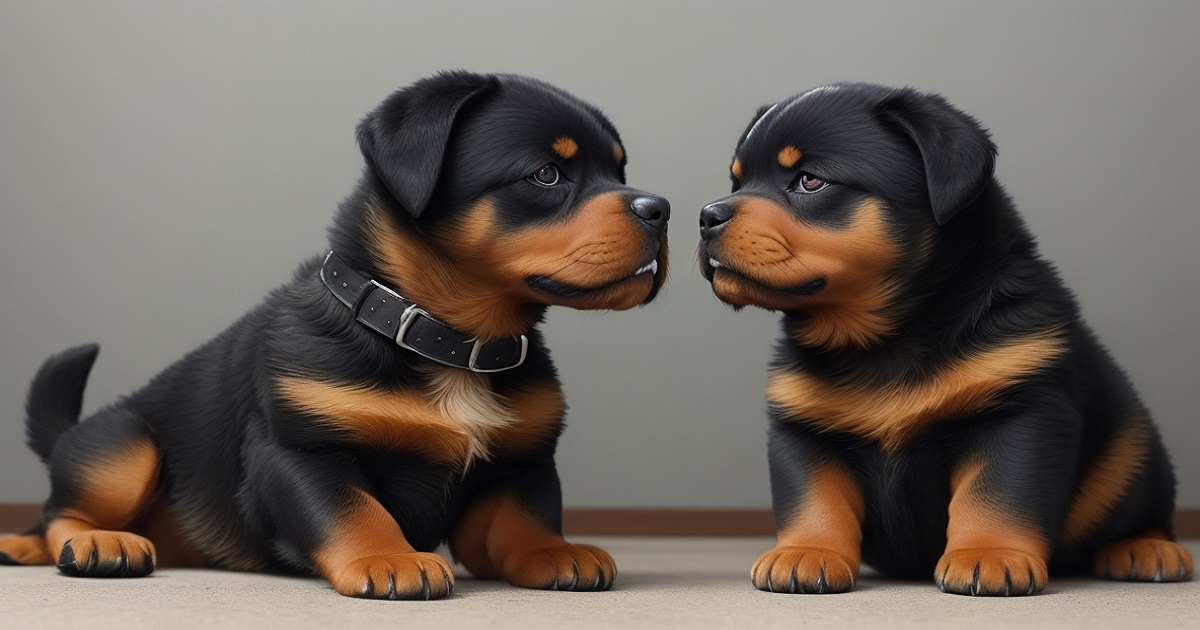
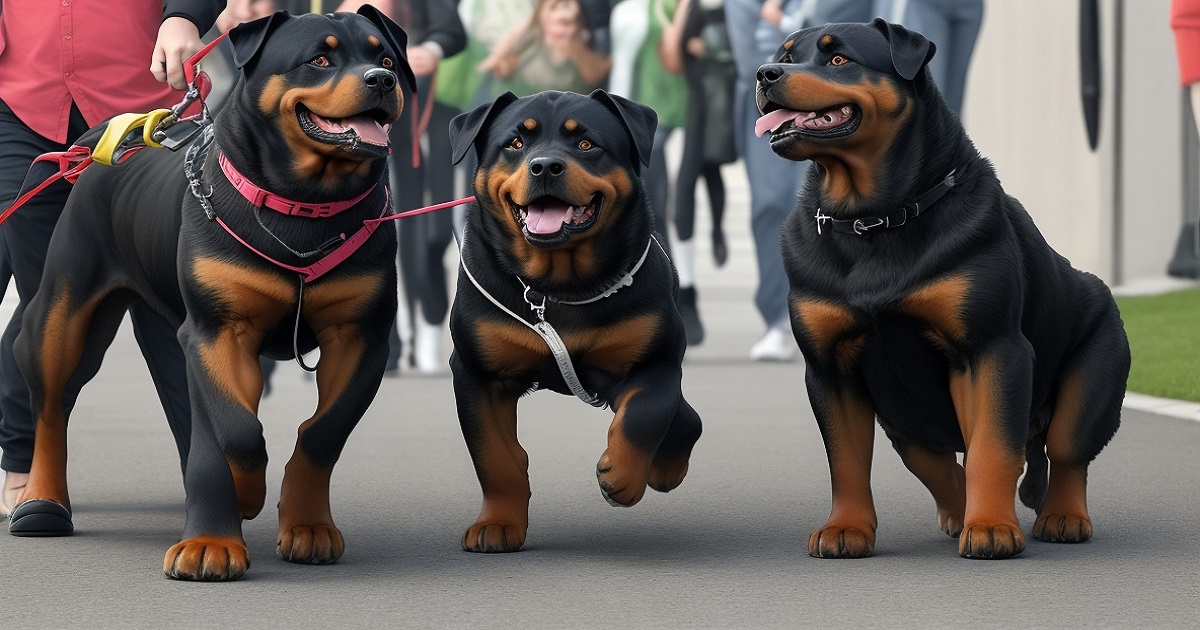
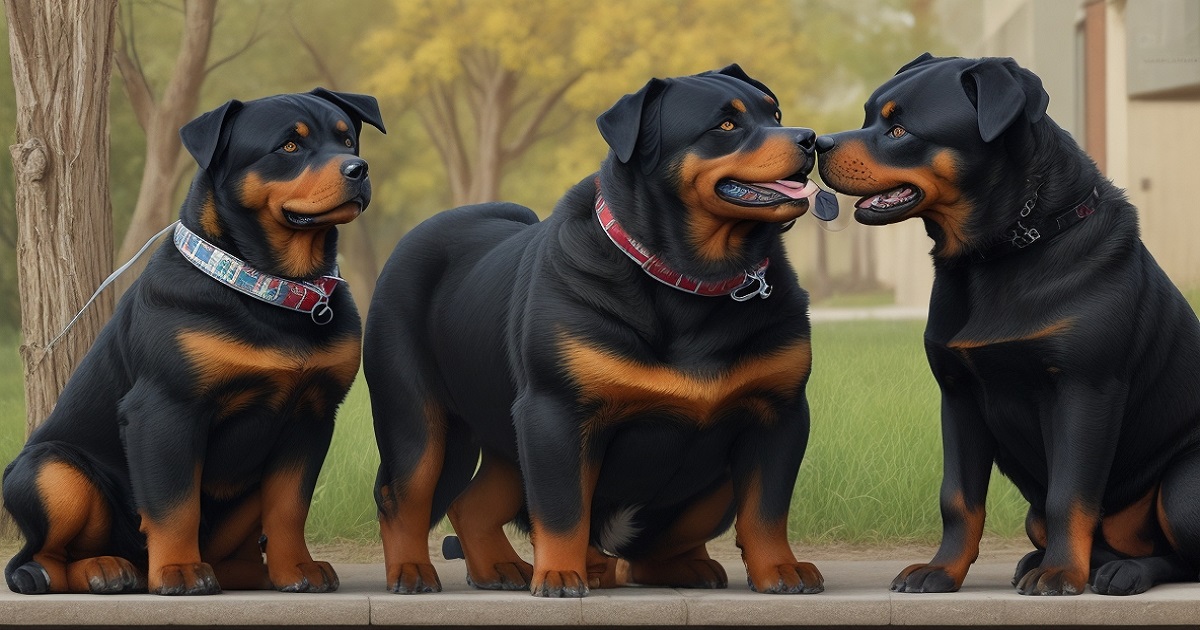
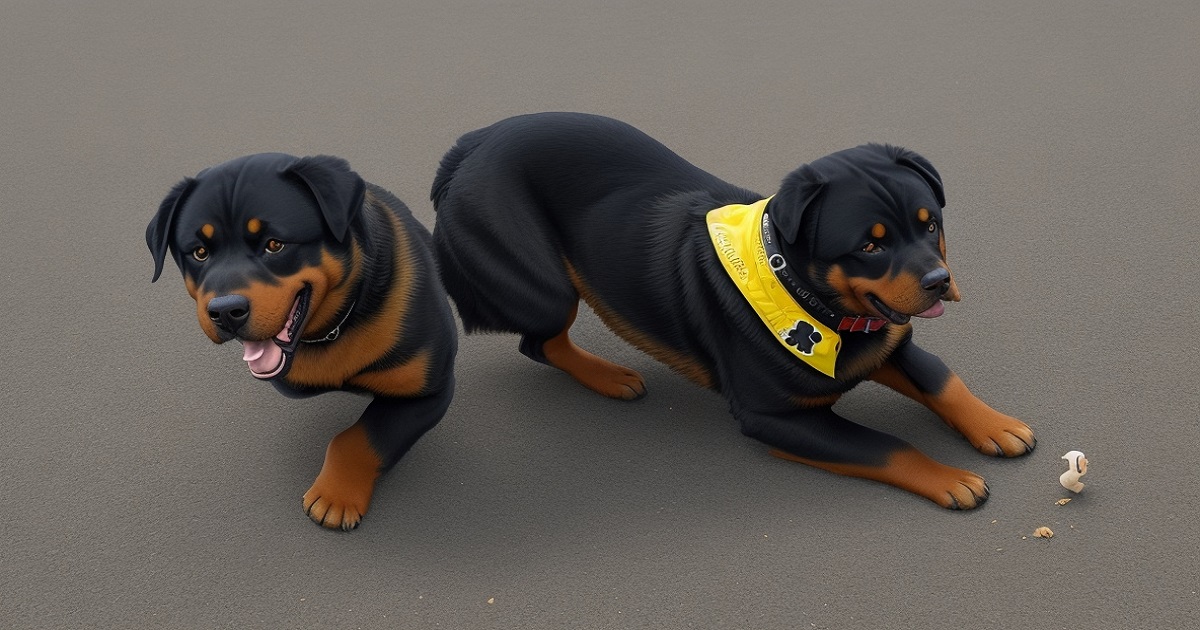
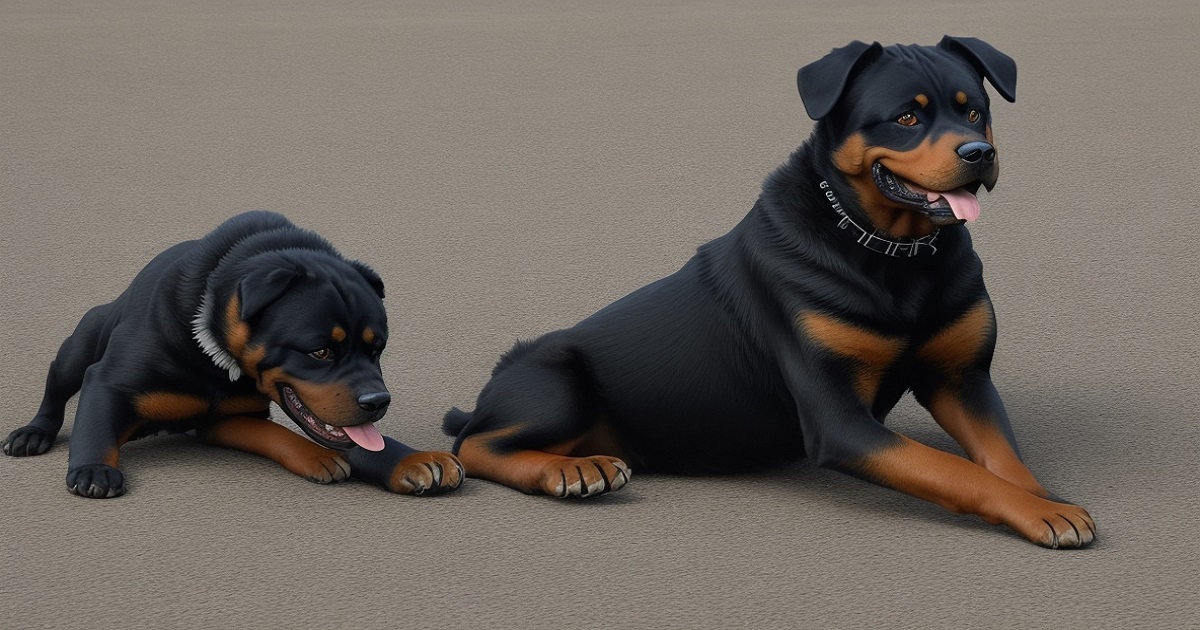

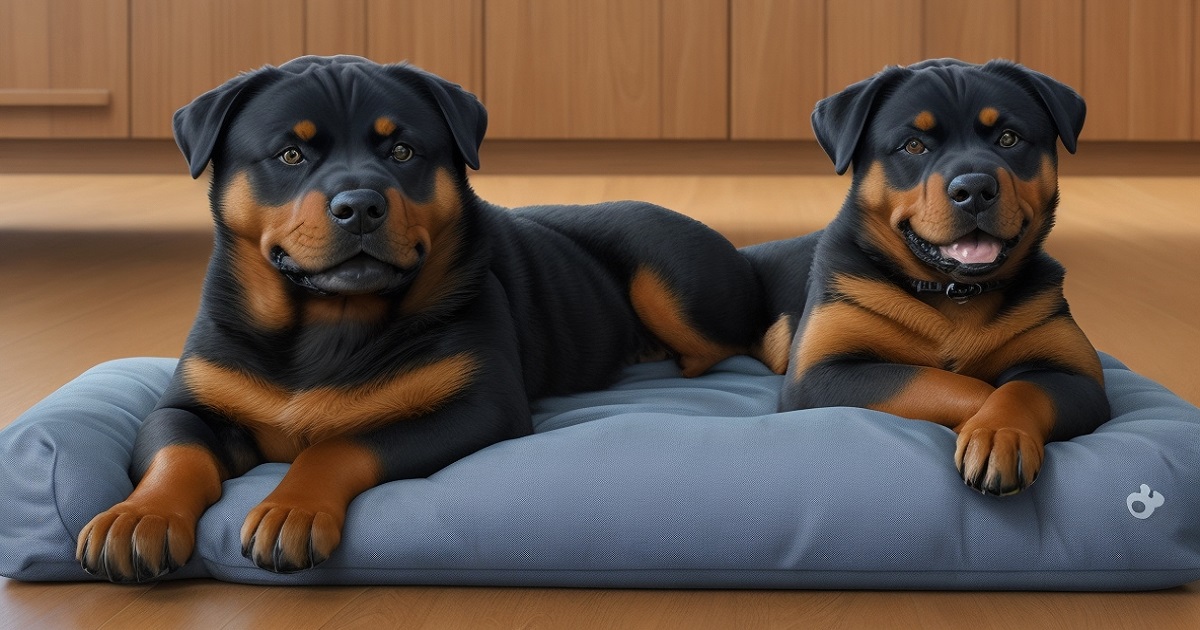



1 thought on “The Ultimate Guide to Rottweiler Training Commands: 50 Essential , Techniques, and Tips”